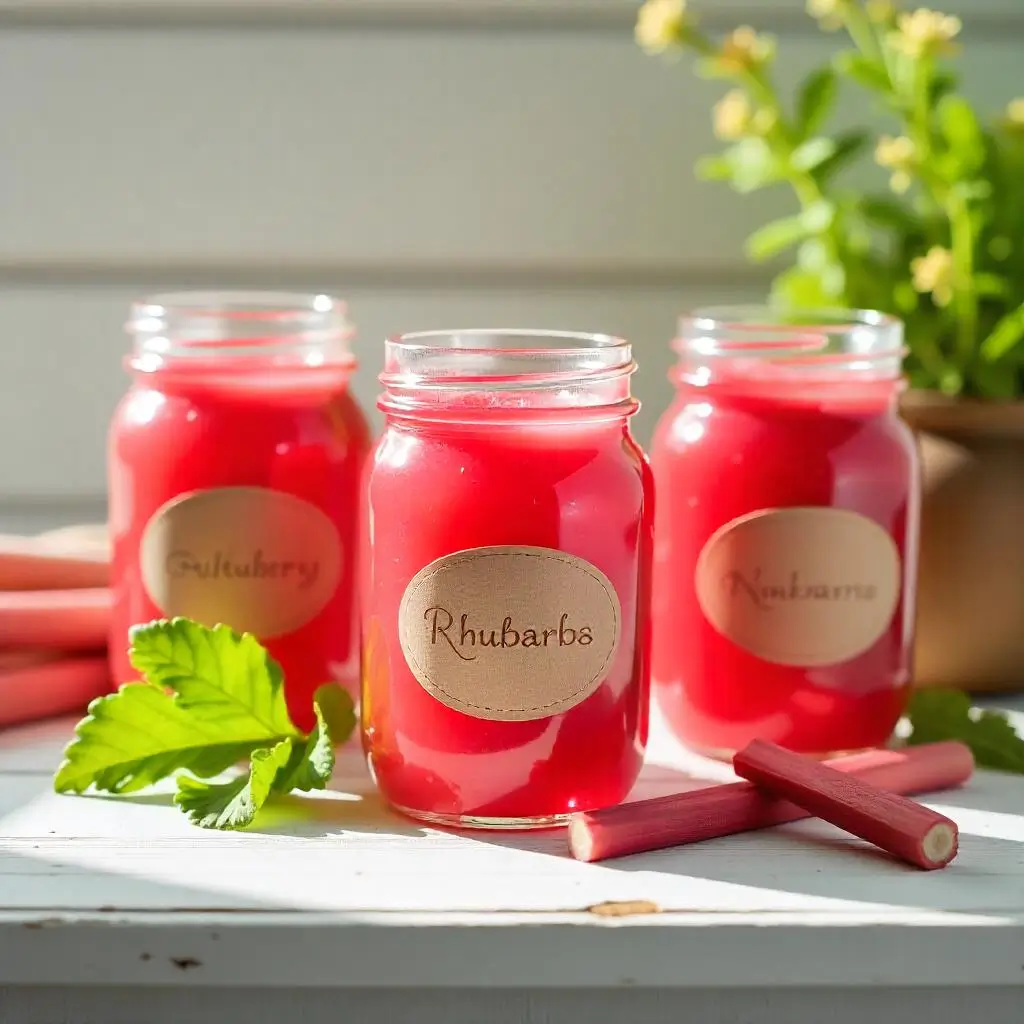When spring arrives and rhubarb stalks emerge from the garden, there’s nothing quite like transforming these tart, pink treasures into a delicious homemade jam. Furthermore, this simple rhubarb jam recipe combines the perfect balance of sweet and tangy flavors that will elevate your breakfast table and preserve the essence of the season.
Table of content :
- Recipe Overview and What Makes This Rhubarb Jam Special
- Essential Ingredients for Perfect Rhubarb Jam
- Step-by-Step Instructions: Creating Your Rhubarb Jam Masterpiece
- Proper Canning Technique for Long-Term Storage
- Expert Tips for Success
- Serving Suggestions and Uses
- Exploring Related Recipes
- Nutritional Information
- Other recipe
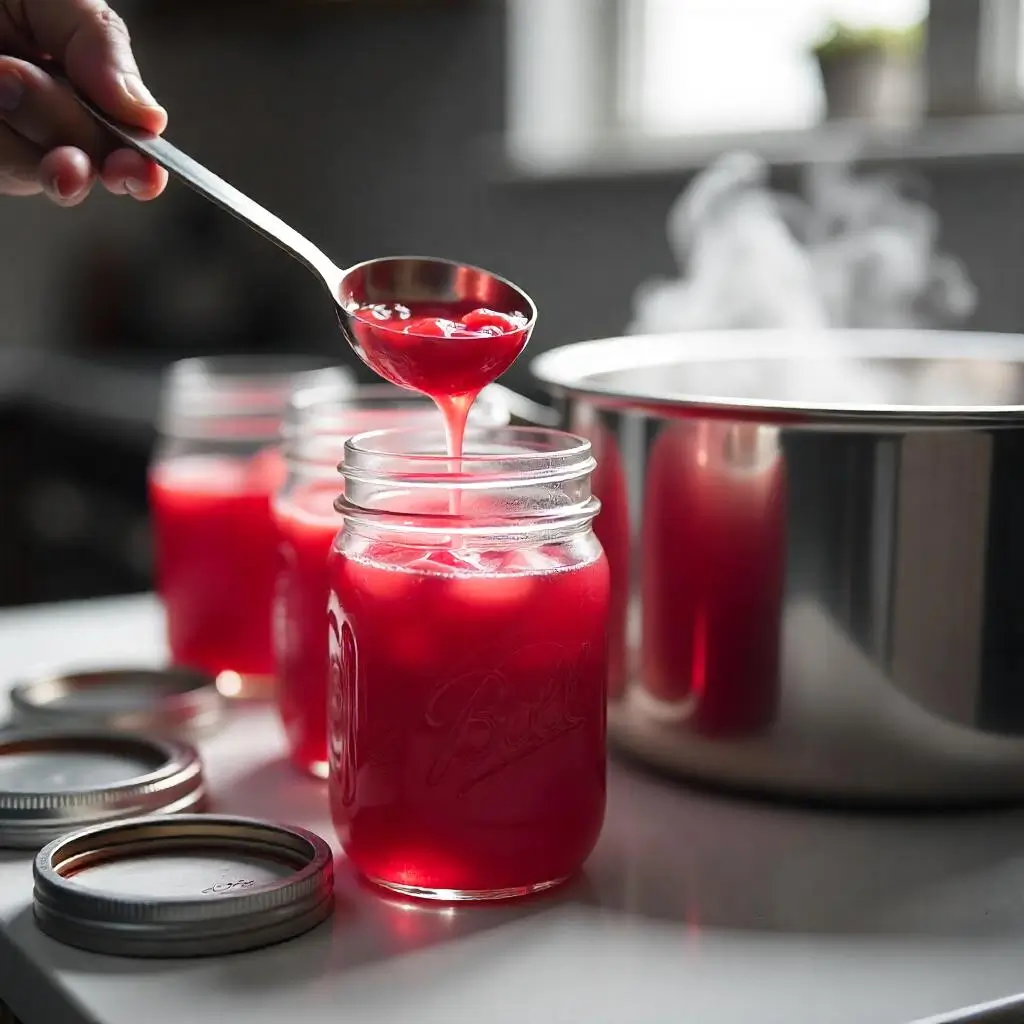
Recipe Overview and What Makes This Rhubarb Jam Special
This particular rhubarb jam recipe has earned an impressive 4.5-star rating from over 200 home cooks who have tried and tested it. Moreover, the recipe has been featured in 150+ photos shared by enthusiastic bakers, demonstrating its popularity and reliability.
What sets this jam apart is its simplicity and authentic flavor profile. Additionally, the recipe maintains the natural tartness of rhubarb while achieving the perfect sweetness that appeals to both children and adults. The Test Kitchen at Allrecipes has thoroughly validated this recipe, ensuring consistent results every time you make it.
This versatile preserve falls into several popular categories: side dishes, sauces and condiments, canning and preserving recipes, and specifically, jams and jellies recipes. Consequently, it serves multiple purposes in your kitchen, from breakfast spreads to dessert accompaniments.
Essential Ingredients for Perfect Rhubarb Jam
The beauty of this rhubarb jam lies in its minimal ingredient list. However, each component plays a crucial role in achieving the perfect texture and flavor:
- 3 pounds fresh rhubarb, chopped into 1/2-inch pieces
- 3 cups granulated white sugar
- 1/4 cup water
- 2 tablespoons fresh orange juice
- 1 teaspoon orange zest
Interestingly, the orange juice and zest not only enhance the flavor but also provide natural pectin, which helps the jam achieve its ideal consistency. Furthermore, using fresh rhubarb ensures the brightest flavor and best texture in your finished product.
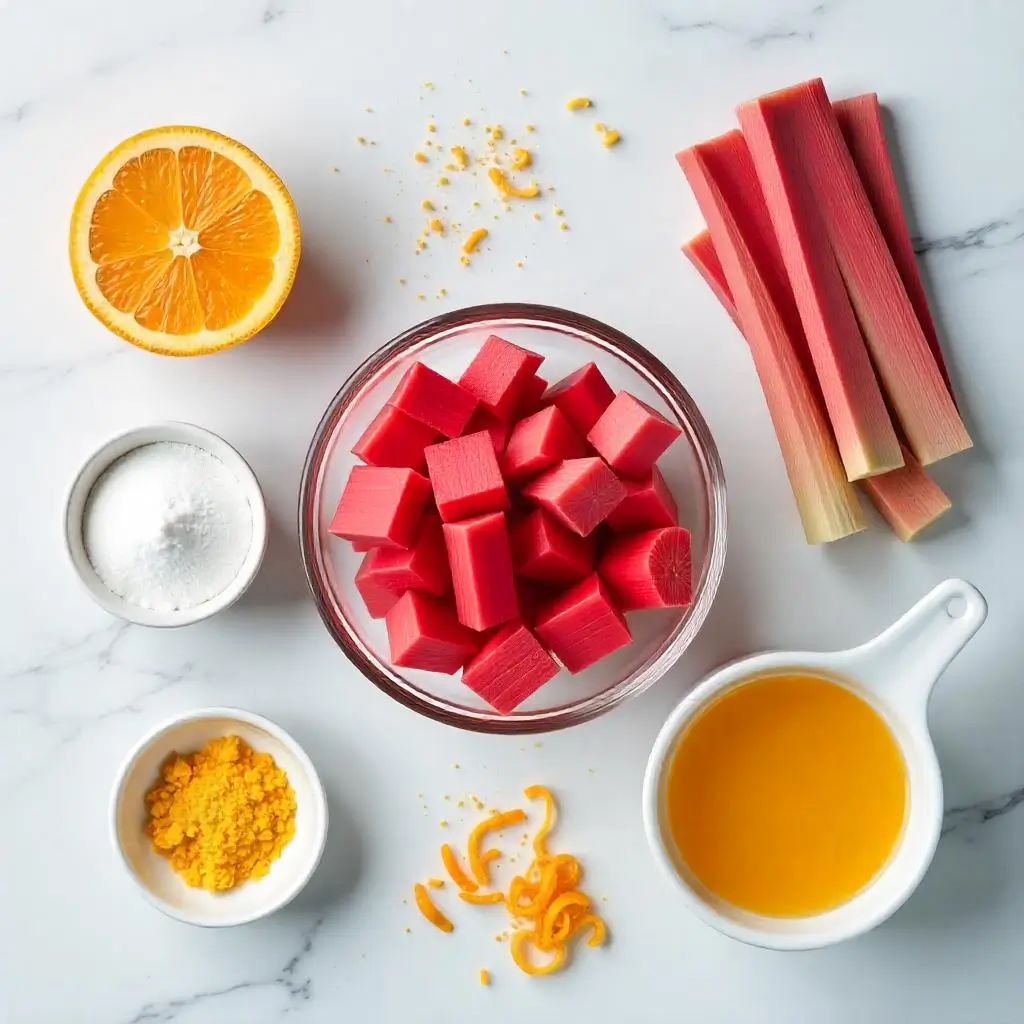
Step-by-Step Instructions: Creating Your Rhubarb Jam Masterpiece
Preparing the Jam Base
First, combine the chopped rhubarb, sugar, and water in a large, heavy-bottomed saucepan. Subsequently, let this mixture sit for 10 minutes, allowing the sugar to begin drawing out the rhubarb’s natural juices. Meanwhile, prepare your canning equipment to ensure everything is ready when the jam reaches the proper consistency.
Next, bring the mixture to a boil over medium-high heat, stirring frequently to prevent sticking. Once boiling, reduce the heat to medium and continue cooking for 15-20 minutes. During this time, the rhubarb will break down and the mixture will thicken considerably.
Achieving the Perfect Consistency
As the jam cooks, stir in the orange juice and zest during the final 5 minutes of cooking. Additionally, test the jam’s readiness by placing a small amount on a chilled plate. If it holds its shape and doesn’t run when tilted, your jam is ready. Otherwise, continue cooking for a few more minutes and test again.
Proper Canning Technique for Long-Term Storage
Sterilizing Equipment
Before beginning the canning process, sterilize your jars and lids properly. First, wash them in hot, soapy water, then place the jars in a large pot of boiling water for 10 minutes. Similarly, prepare the lids according to the manufacturer’s instructions, typically by simmering them in hot water.
Filling and Processing
While the jam is still hot, carefully ladle it into the sterilized jars, leaving 1/4-inch headspace. Then, use a clean knife or bubble tool to remove any air bubbles by gently stirring the jam. After that, wipe the jar rims clean with a damp cloth to ensure a proper seal.
Subsequently, place the lids on the jars and screw on the bands until fingertip tight. Then, process the jars in a boiling water bath for 5 minutes, ensuring the water covers the jars by at least 1 inch.
Cooling and Storage
After processing, carefully remove the jars and place them on a towel-lined surface. Allow them to cool undisturbed for 12-24 hours. During this time, you should hear the satisfying “pop” of the lids sealing. Finally, check that each lid is properly sealed by pressing the center – it should not flex up and down.
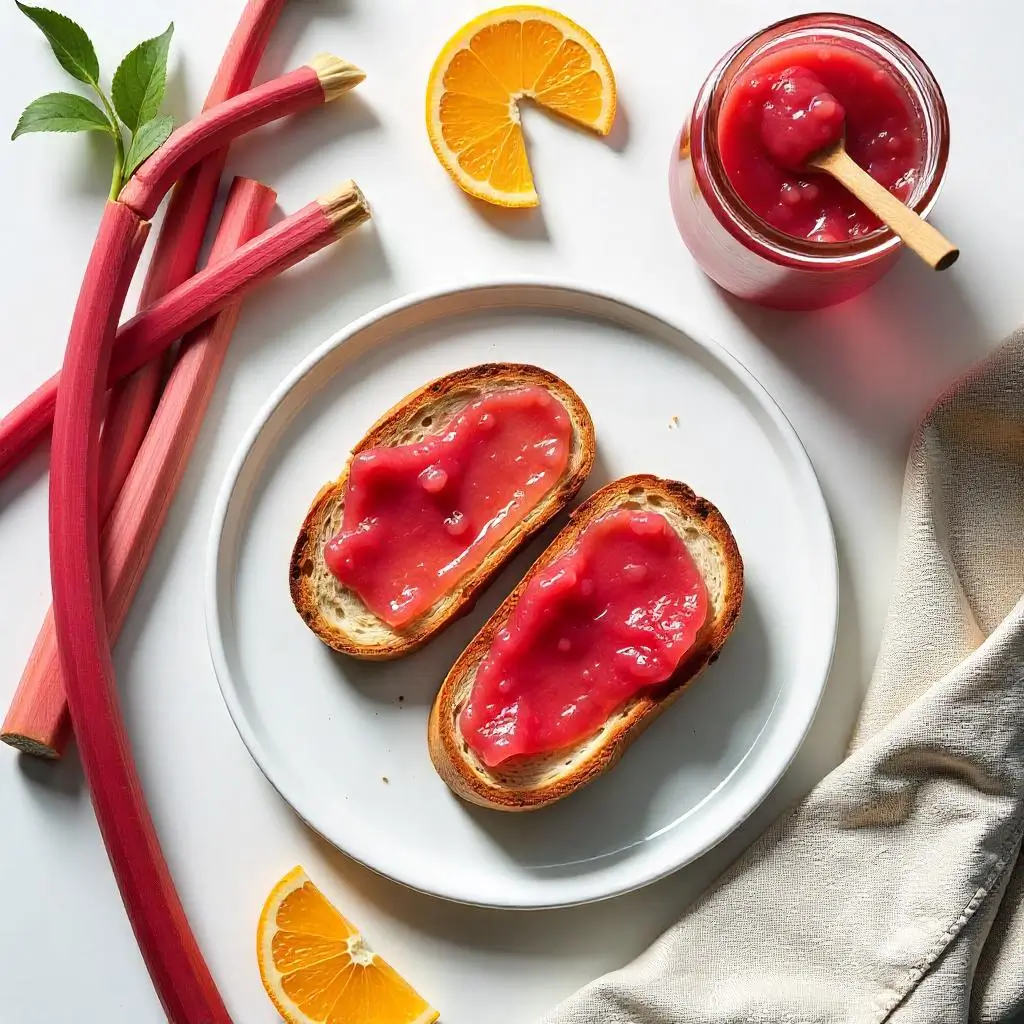
Expert Tips for Success
Storage Recommendations
Once properly sealed, store your rhubarb jam in a cool, dark place where it will maintain its quality for up to one year. However, once opened, refrigerate the jam and use it within three weeks for best quality. Alternatively, you can freeze the jam for up to six months, though the texture may be slightly different after thawing.
Flavor Variations
Many home cooks have successfully customized this basic recipe. For instance, some add a pinch of ground ginger for warmth, while others incorporate cinnamon for a spiced version. Additionally, you can experiment with different types of sugar, such as raw sugar or coconut sugar, though this may affect the final color and flavor profile.
Serving Suggestions and Uses
This versatile jam shines in numerous applications. For breakfast, spread it on toast, English muffins, or fresh biscuits. Furthermore, it makes an excellent filling for thumbprint cookies or a delightful swirl in plain yogurt. Additionally, consider using it as a glaze for roasted meats or as a component in vinaigrettes for spring salads.
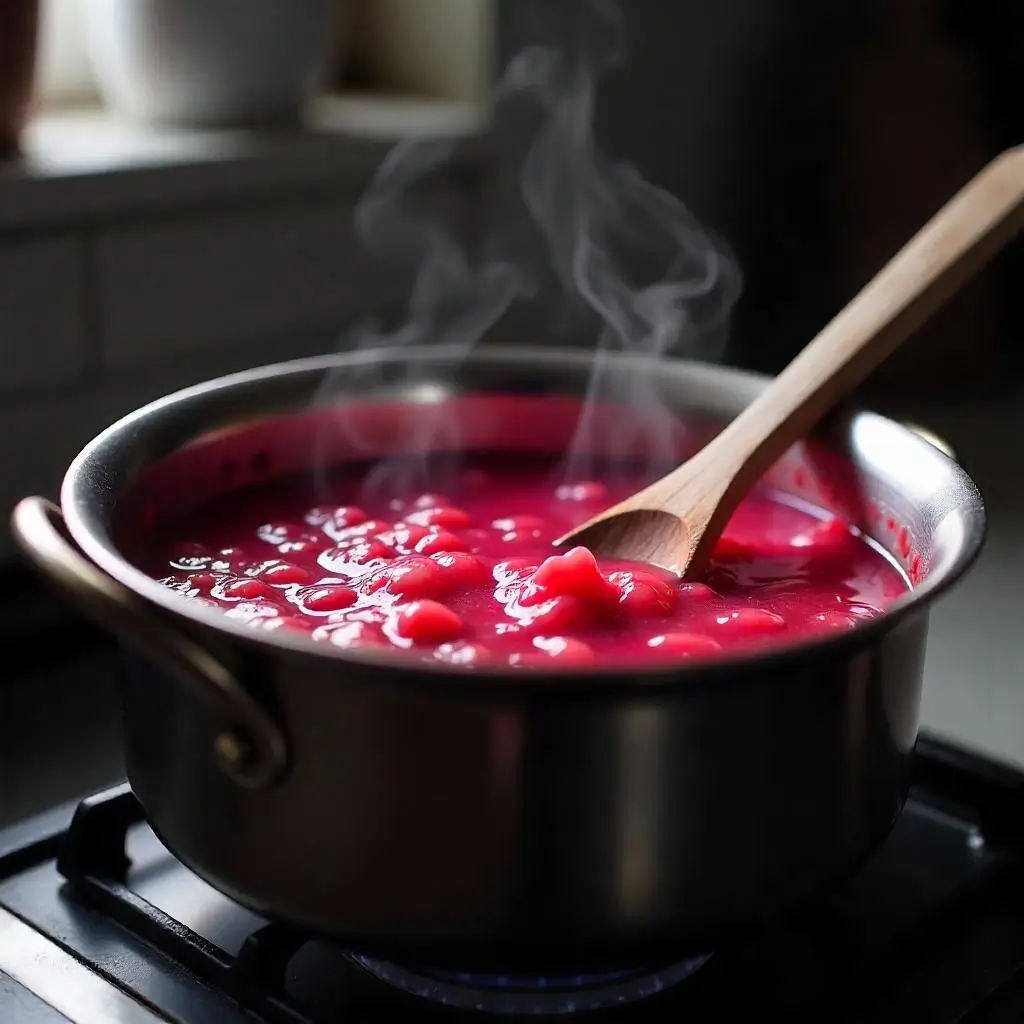
Exploring Related Recipes
Once you’ve mastered this basic rhubarb jam, consider expanding your repertoire with these related recipes:
- Strawberry-Rhubarb Jam: Combines the tartness of rhubarb with sweet strawberries
- Rhubarb-Pineapple Jam: Adds tropical sweetness to balance the rhubarb’s tang
- Easy Rhubarb Compote: A looser, less sweet version perfect for dessert toppings
- Spiced Rhubarb Chutney: Incorporates savory elements for meat pairings
Nutritional Information
Each 2-tablespoon serving contains approximately:
- Calories: 45
- Total Fat: 0g
- Carbohydrates: 12g
- Sugars: 11g
- Protein: 0g
- Sodium: 1mg
These values are based on a 2,000-calorie diet and may vary depending on the specific ingredients used. Moreover, the natural vitamins and minerals from the rhubarb contribute additional nutritional benefits.
Other recipe :
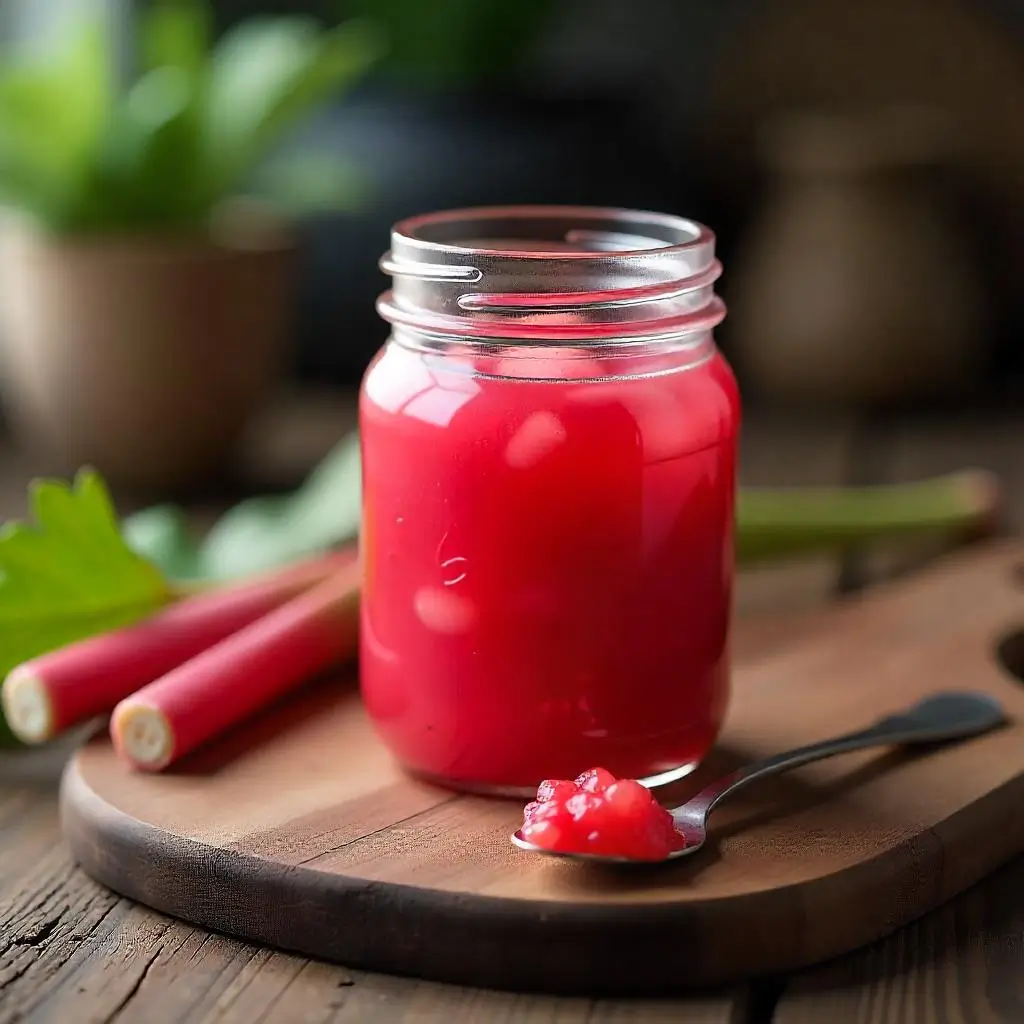
Making homemade rhubarb jam transforms a simple garden vegetable into a gourmet preserve that captures the essence of spring. Furthermore, the satisfaction of creating something delicious from scratch, combined with the practical benefits of preservation, makes this recipe a valuable addition to any home cook’s repertoire. Therefore, when rhubarb season arrives, embrace the opportunity to create this delightful jam that will brighten your table throughout the year.
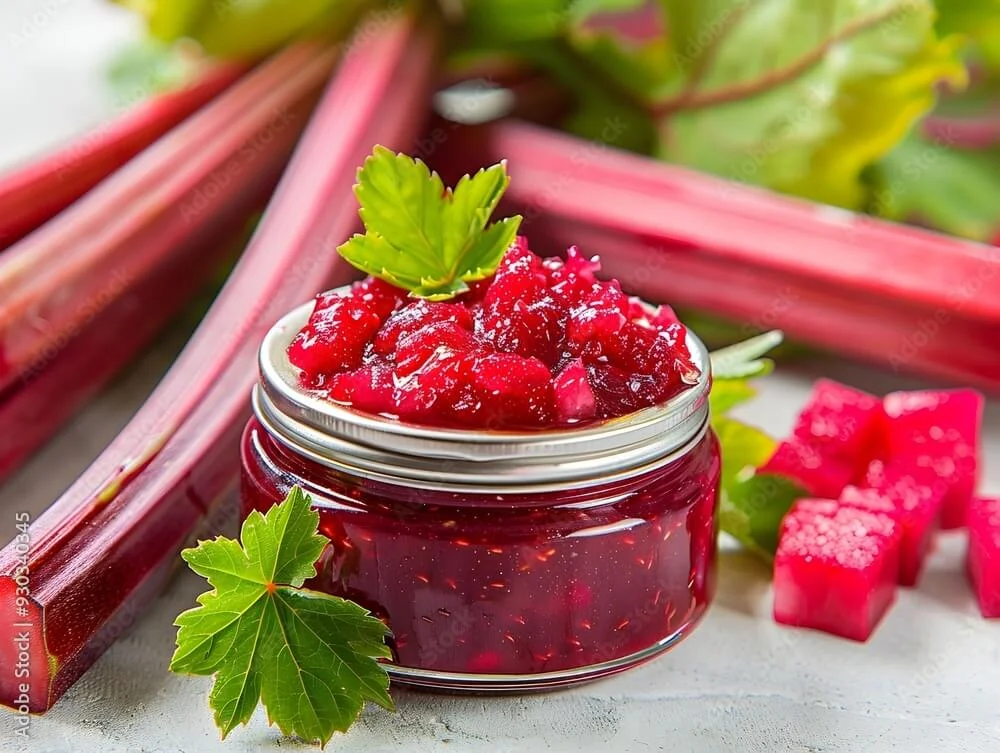
“How to Make Rhubarb Jam: A Simple and Delicious Recipe”
Description
Learn how to make rhubarb jam with this easy and delicious recipe. Perfect for toast, desserts, or gifts—homemade jam has never been this simple!
Ingredients
Instructions
- Combine chopped rhubarb, sugar, and water in a large heavy-bottomed saucepan. Let sit for 10 minutes.
- 2Bring mixture to a boil over medium-high heat, stirring frequently. Reduce heat to medium.
- 3Cook for 15-20 minutes until rhubarb breaks down and mixture thickens.
- 4Stir in orange juice and zest during the final 5 minutes of cooking.
- 5Test consistency by placing a small amount on a chilled plate. If it holds its shape, it’s ready.
- 6For canning: Fill sterilized jars, leaving 1/4-inch headspace. Process in boiling water bath for 5 minutes.
Notes
- This homemade rhubarb jam recipe is perfect for beginners and requires no pectin. With just a few ingredients, you can create a sweet-tart spread that’s great on toast, biscuits, or as a filling for pastries. Adjust the sweetness to your taste and enjoy a fresh, seasonal treat!
